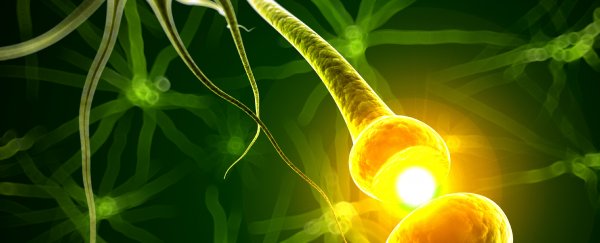Research into the memory of marine snails offers hope that patients in the early stages of Alzheimer's disease may one day be able to restore their lost memories.
Currently, most neuroscientists believe that memories are stored at the synapses - or connections - of our brain cells. These synapses are destroyed by Alzheimer's disease, which led to the common belief that the memories lost by Alzheimer's patients were irretrievable.
But new research from the University of California, Los Angeles, in the US, contradicts the idea that long-term memory is stored at synapses, and suggests that there could be a way to restore those that are lost.
"That's a radical idea, but that's where the evidence leads," said David Glanzman, one of the lead researchers, in a press release. "The nervous system appears to be able to regenerate lost synaptic connections. If you can restore the synaptic connections, the memory will come back. It won't be easy, but I believe it's possible."
Glanzman and his team studied a small marine snail called Aplysia, which has surprisingly similar molecular and cellular processes in its brain to humans, even though the snail has approximately 20,000 neurons compared to our 1 trillion.
Scientists know that in both Aplysia and humans, long-term memories require the hormone serotonin to help them form. Serotonin triggers the creation of new proteins, which then form new synaptic connections in the brain, essentially building a new memory.
When this process is disrupted - as a result of, say, concussion - memories no longer form. This is why people in accidents often can't remember what happened leading up to their injury.
"If you train an animal on a task, inhibit its ability to produce proteins immediately after training, and then test it 24 hours later, the animal doesn't remember the training," said Glanzman in the release.
"However, if you train an animal, wait 24 hours, and then inject a protein synthesis inhibitor in its brain, the animal shows perfectly good memory 24 hours later. In other words, once memories are formed, if you temporarily disrupt protein synthesis, it doesn't affect long-term memory. That's true in the Aplysia and in human's brains."
To understand where these memories were being stored, the scientists first trained the snails to be scared of mild electric shocks. The snails have a defensive withdrawal reaction that helps them protect their gills, and, although they didn't use this when they were first shocked, after a series of electric shocks, they started to display the reaction, showing that a long-term memory had formed.
The team then studied the sensory and motor neurons that control the snail's withdrawal reflex in a Petri dish, and showed that they re-formed the synaptic connections that existed when the neurons were inside the snail's body.
When the team added serotonin to the dish, new synaptic connections formed between these neurons. But if serotonin was immediately followed by a substance that stops proteins from synthesising, then synaptic growth was blocked - this meant that essentially long-term memory could not be formed.
The scientists then looked at whether synapses disappeared when memories did - to do this they trained the neurons and used serotonin to form long-term memories.
They then added more serotonin to the Petri dish 24 hours later. This serotonin boost should have re-strengthened the synaptic connections - except that the team also followed it directly with a protein blocker.
This not only prevented the synaptic connections from strengthening, but actually wiped them out altogether - the team found that the number of synapses present in the dish was now back to the amount before the memory had ever been learnt. This should mean that the memory was erased.
But according to the current theory - that memories are stored in the synapses - this would mean that the synapses lost would have been the same synapses that grew in the first place. But they weren't. They were random - some of the "memory" synapses had been lost, but some were still there. And some of the original synapses were randomly gone too.
Even more fascinatingly, when the scientists performed the same experiment in live snails, the memories that should have been lost (the fear of a mild electric shock that normally wouldn't be present in a naive snail) returned. Their results have been published in the journal eLife.
"That suggests that the memory is not in the synapses but somewhere else," said Glanzman in the release. "We think it's in the nucleus of the neurons. We haven't proved that, though."
The research has some pretty important implications for people with Alzheimer's disease, because it's known to only destroy synapses in the brain.
And if Glanzman's theory is true?
"As long as the neurons are still alive, the memory will still be there, which means you may be able to recover some of the lost memories in the early stages of Alzheimer's," he said. However, in later stages of the disease, the neurons die, which means that they likely can't be recovered.
Still, it's a pretty exciting (albeit very early) study, which offers new hope to those with memory loss.
Source: ScienceDaily
